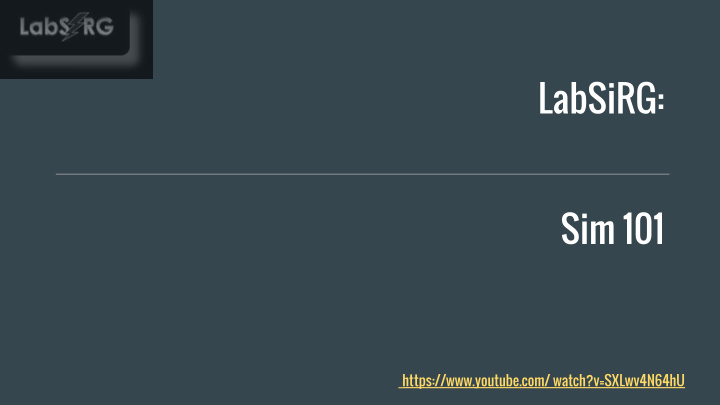



LabSiRG: Sim 101 https://www.youtube.com/ watch?v=SXLwv4N64hU
Amanda VanSpronsen, BSc MLS, MSc Gwen Clarke, MD FRCPC Megan Parrish, BSc MLS, MLT Rhonda Shea, BSc MLS, MA
DECLARATIONS ● Grants/Research Support: NONE ● Speakers Bureau/Honorarium: NONE ● Consulting Fees: NONE ● Other: NONE
OBJECTIVES ● Introduce you to simulation ● Describe the difference between sim and other learning modalities ● Describe the phases of sim ● Describe Dos and Don’ts of sim ● Share our lab sim experience
SIMULATION “Simulation is a technique, not a technology, to replace or amplify real experiences with guided experiences, often immersive in nature, that evoke or replicate substantial aspects of the real world in a fully interactive manner.” Gaba, Qual Saf Health Care The Future Vision of Simulation in Healthcare 2004;13
SIMULATION ● Simulation is: ○ Immersive ○ As real as possible ○ Learner driven ○ An opportunity for the participant to practice a skill or perform a task in a risk-free, realistic environment
SIMULATION ● Simulation is not: ○ A drill ○ A test ○ Instructor driven - WHAT DOES THIS MEAN?
SIMULATION
SIMULATION VS OTHER L.M.s ● Adults learn best by: ○ Having a meaningful experience ○ Being able to reflect on the experience ○ Learning in context ● HALO events
SIMULATION VS OTHER L.M.s ● Best Practice ● Hidden issues ● Educational Research supports simulation ○ Kolb ■ Cycle of experiential learning http://www.brookes.ac.uk/services/ocsld/resources/independent.html
SIMULATION VS OTHER L.M.s ● Sim provides just enough stress for learning ● Pleasant Activation Simulation ○ Circumplex Model of Affect Debriefing http://www.psychomedia.it/rapaport-klein/Peterson-05_DevelopPsychopathol10.pdf
SIMULATION VS OTHER L.M.s ● It should be noted: ○ Having an experience does not always = learning ○ Experiential learning happens through reflection, action and sense-making
SIMULATION VS OTHER L.M.s
SIMULATION VS OTHER L.M.s Experience and Reflect and Experiment Conceptualize
DOS AND DON’TS OF SIM ● DO … ○ Provide a safe environment ■ Provide a robust pre-brief ■ Ensure the “right” people are in the room ■ Watch body language ○ Allow it to be organic - morph ○ Allow it to be a tool of improvement ○ Utilize SMEs
DOS AND DON’TS OF SIM ● DON’T … ○ Tie this to performance ○ Interrupt during the sim ■ learning occurs from the learner with guidance from the person running the sim - usually during de-brief ○ “Help” the learner during the sim ○ Hold tight to objectives
MY EXPERIENCE ● ANATOMICAL PATHOLOGY - CLINICAL YEAR ○ Roles ○ Expectations ○ Impact
QUESTIONS? http://www.labsirg.com/ THANK YOU!
Recommend
More recommend